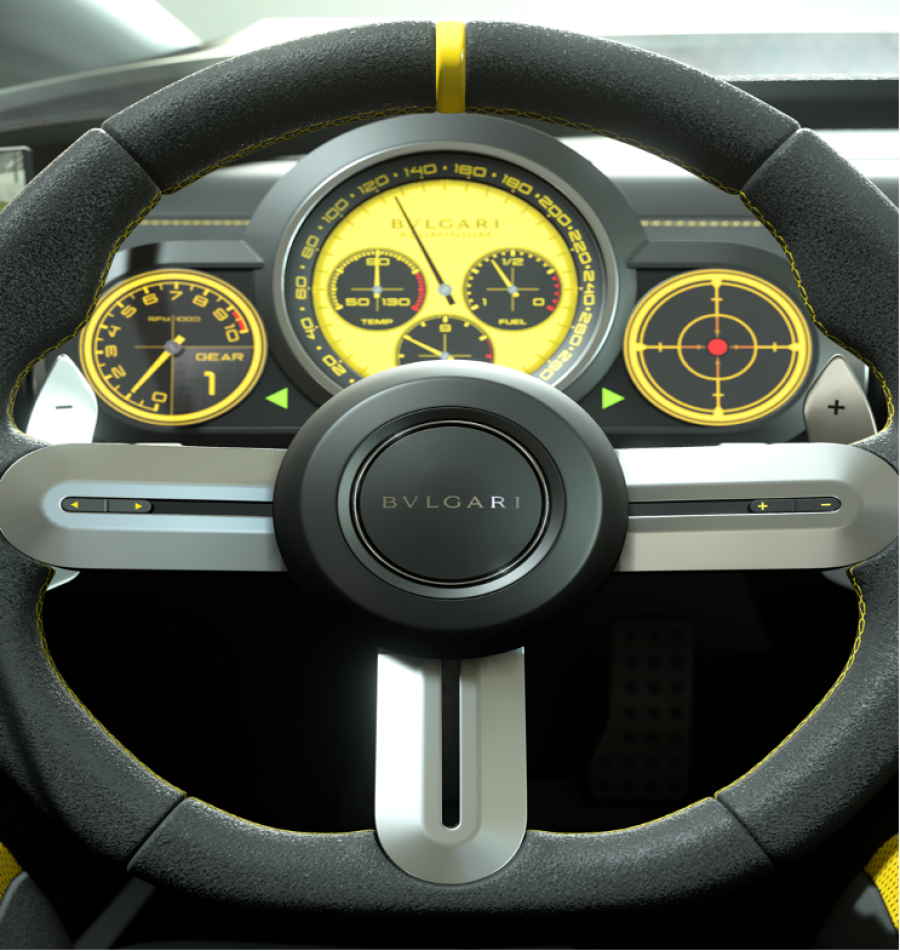
Time, speed, and beauty stand as the indispensable trio narrating Bulgari's Barcelona premiere. In early December, the Roman brand astonished all by introducing not just fresh models of unisex sports watches, the Aluminium x Gran Turismo line, but also unveiling the Aluminium Vision GT car. This car was crafted not for real-life circuits but for virtual ones – specifically for competitions within the Gran Turismo computer game.
The creation of the Aluminium Vision GT, alongside Bulgari's chief designer Fabrizio Buonamassa, was led by Fabio Filippini, a legend in artistic design. An architect, designer, theorist, and practitioner, Filippini, an Italian native, boasts a career spanning European and Asian brands. He notably headed the Pininfarina Design Centre, renowned for shaping the world's automotive fashion. Fabio Filippini gave an exclusive interview to NARGIS MAGAZINE.
Gran Turismo is one of the world's most popular computer games, captivating nearly 100 million players. Numerous brands craft exclusive racing car models for this game. While some exist only on-screen, others materialise into life-size versions, just like Bulgari's Aluminium Vision GT unveiled in Barcelona during the Gran Turismo computer game finals. Is this your premiere venture into creating a one-off car, resembling more of a sculpture than a functional machine?
I've had a similar experience before. Back in 2017, while at Pininfarina, I created a car for the Gran Turismo game, but our focus revolved around the possibility of its limited series production. The phases of a designer's work in the "extended design" stage, preceding the creation of a specific model, offer room to experiment and introduce fresh ideas. Not every idea is destined to transform into real cars – much like the nature of "concept cars." They showcase innovative concepts, technological advancements, and styling innovations without being a mandatory step toward actual production.
What is the difference between designing virtual and real cars?
The design process itself doesn't significantly differ – it's all about context and purpose. Presently, every car begins its journey through digital development. However, the software employed varies based on whether production is part of the plan. Naturally, a production-bound car demands a deeper, technically intricate development compared to one meant solely for a virtual universe. The "real" one must meet extensive safety regulations, and environmental considerations, not to mention the calculations made by marketers.
So, can you disregard technical limitations and contradictions when designing a "game" machine?
Play is a dream world, captivating the senses primarily. We can liberate ourselves from real constraints, but there's a boundary, for the game remains a simulation of reality. In titles like Gran Turismo, on-screen cars possess technical attributes akin to reality, necessitating us to bear these constraints in mind. This ensures the player behind the game wheel experiences a sensation akin to being in the cockpit of an actual racing car. It boils down to whether we aim for an authentic portrayal of reality or seek a departure from it.
Can you imagine the idea of having to fit the Bulgari concept car model showcased to the public today with a real engine, brakes, suspensions? To make it ready for an actual track experience?
In theory, it's possible. Yet, it demands extensive and meticulous effort, inevitably altering the original concept in some manner. For instance, the first question arises: should the car integrate a thermal or electric motor? It's akin to the deliberation my watchmaking colleagues had to decide whether to adopt quartz or, as they ultimately chose, the traditional mechanical calibre.
You built the life-size model in Turin, in a workshop that builds concept cars. What did the craftsmen there tell you about your new work?
Their admiration for the Aluminium Vision GT car holds particular significance, considering their expertise in encountering the most remarkable models and prototypes every single day.
How do you perceive the relationship between the car's design and the new watch? What aspects enable us to regard this car as a real Bulgari creation?
We worked hand in hand with Bulgari's chief designer Fabrizio Buonamassa, who also has extensive experience in designing cars. Together with him, we achieved an obvious, though never head-on, resemblance between two objects of such different scales. For example, the aluminium body of the car and the black rubber bumper mirror the connection between the aluminium watch case and its rubber bracelet. The rounded cabin corresponds to the glass-covered dial, while the wheels extending beyond the body mirror the side screws on a watch. Moreover, the dashboard's colour and pattern nearly replicate the watch face of the new models.
How does this conversion of watch components into a car, essentially transforming it into a sculpture, align with the essence and philosophy of design? There's merit in Fabrizio Buonamassa's remark about steering clear of creating a "watch on wheels."
In a philosophical sense, a race car embodies the essence of speed, which is intricately tied to time. Watches, particularly chronographs like the ones in this instance, are inherently linked to time, designed to not just measure it but also make it visually tangible. Both converge in the concept of beauty. Our car exudes beauty, just as the new Bulgari watch does. Thus, time, speed, and beauty form the bond between them – there's no contradiction in this union.
Alexey Tarkhanov, exclusively for NARGIS MAGAZINE
Crafted for both men and women, the Bulgari Aluminium x Gran Turismo watch features a case forged from lightweight yet durable aluminium, housing a self-winding chronograph movement, the Manufacture B381. The crown and case back, etched with the "GT Vision 10th Anniversary" logo, are fashioned from titanium. Drawing inspiration from Italian racing cars, the tachymeter dials feature hues reminiscent of their colours. A limited run of 500 pieces boasts a yellow dial with black indexes, while an additional 1,200 pieces feature an anthracite dial adorned with yellow indexes.



